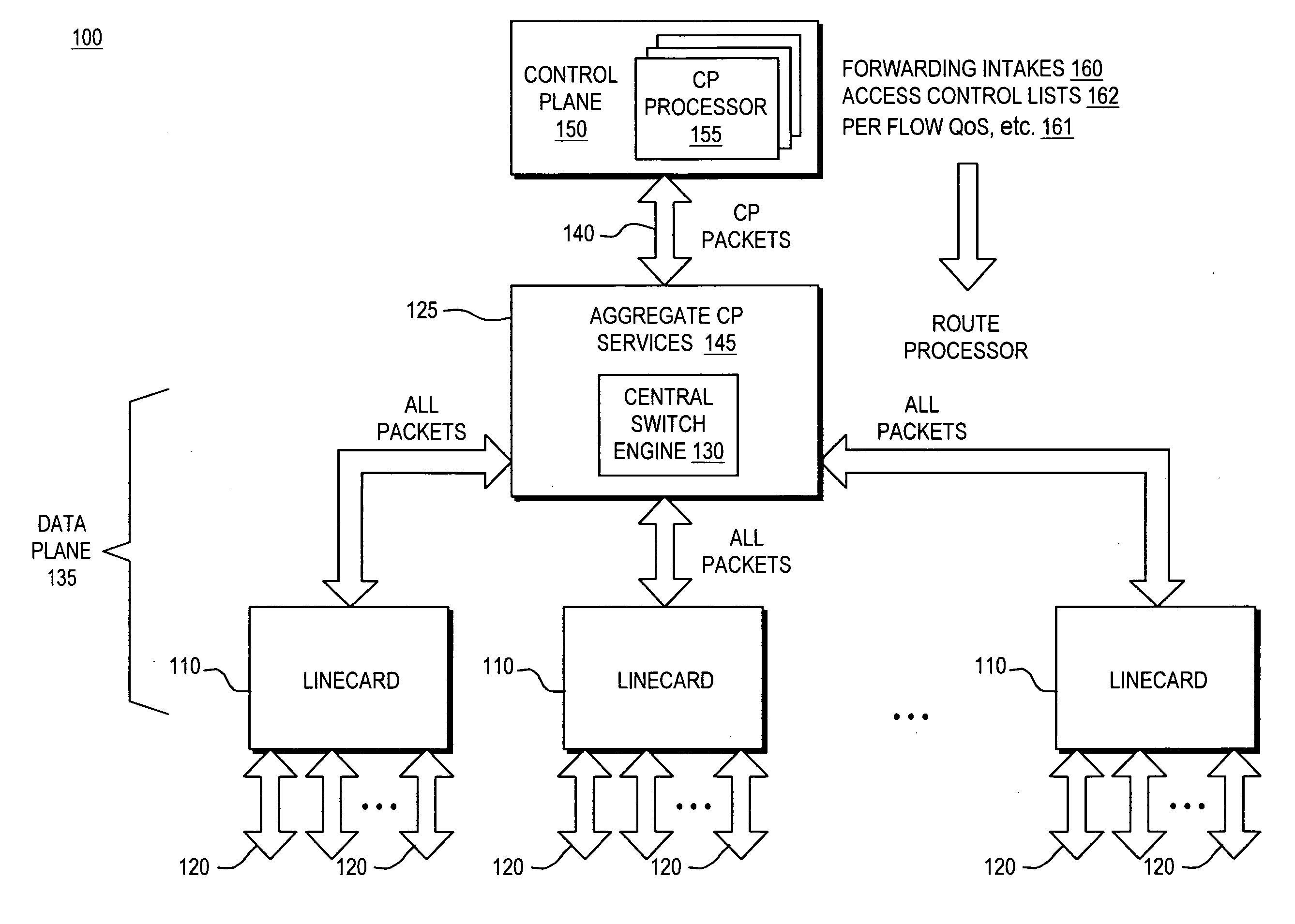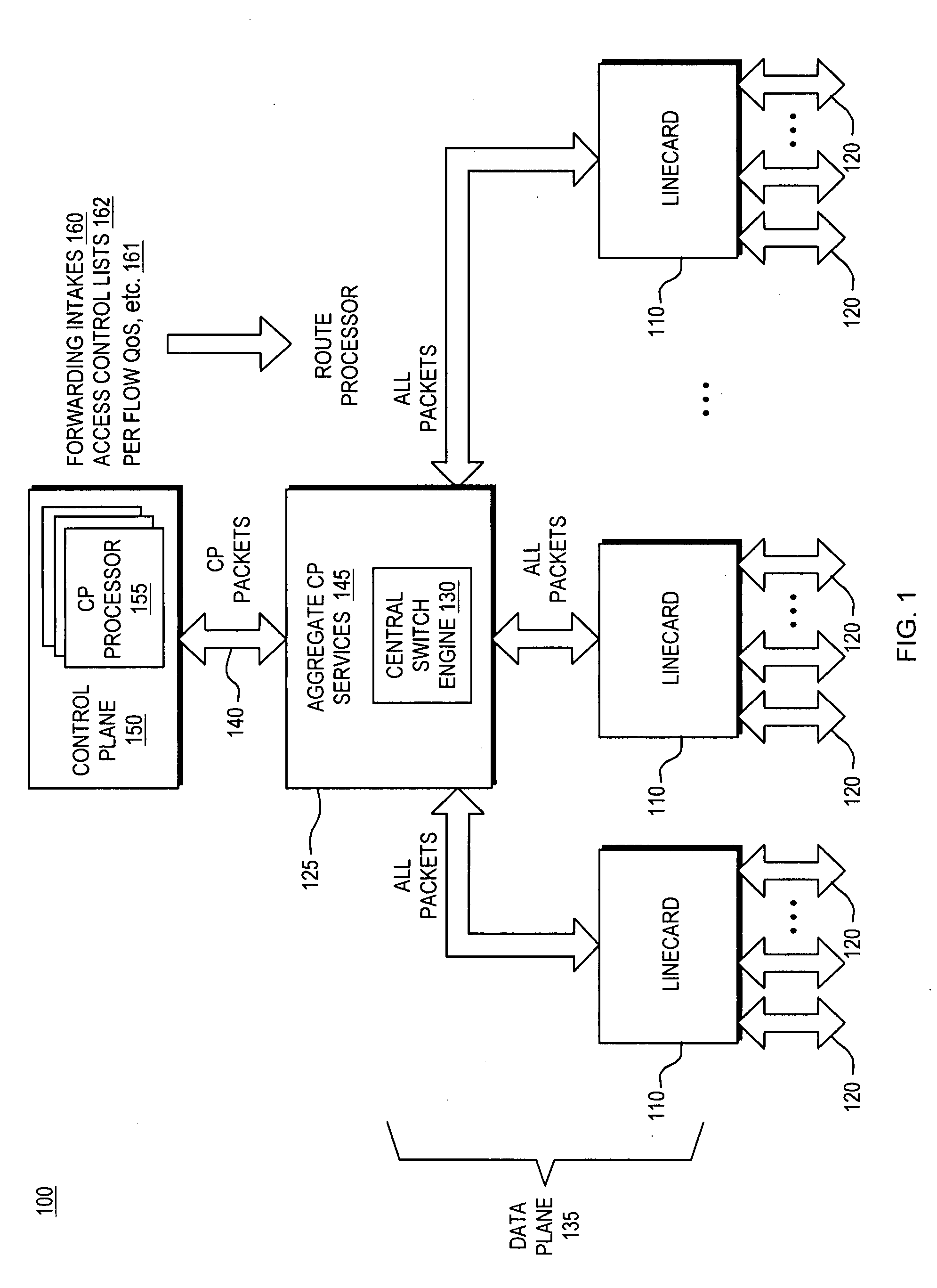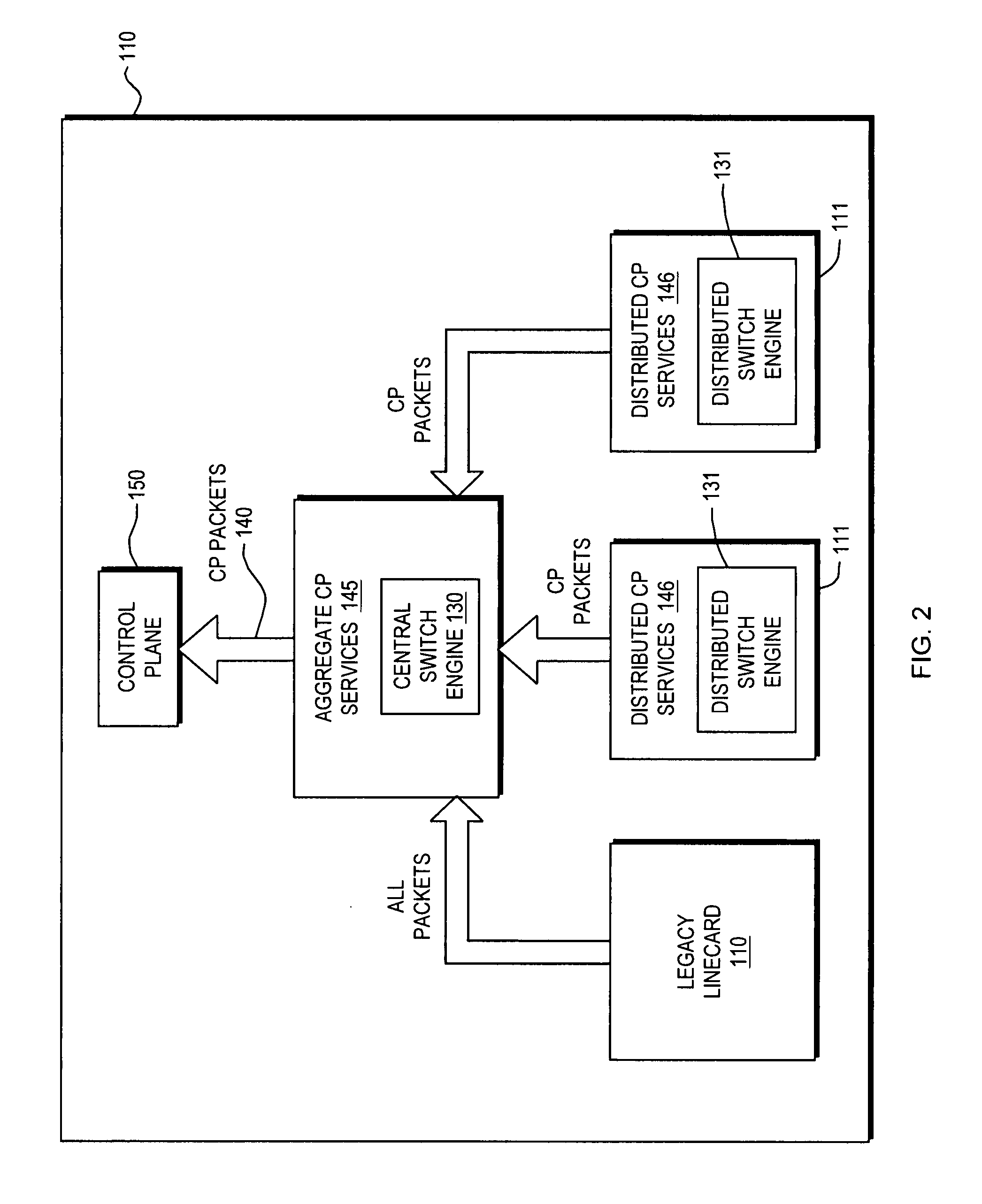Control plane security and traffic flow management
a technology for controlling planes and traffic, applied in data switching networks, frequency-division multiplexes, instruments, etc., can solve problems such as seven of the thirteen servers failing to respond, actual disruption of the conduct of society in general, and loss of commerce and advertising revenue of about $500,000, so as to improve immunity and improve service quality
- Summary
- Abstract
- Description
- Claims
- Application Information
AI Technical Summary
Benefits of technology
Problems solved by technology
Method used
Image
Examples
Embodiment Construction
[0039] A description of example embodiments of the invention follows.
[0040]FIG. 1 is a block diagram of a typical internetworking device 100 such as a router, bridge, switch, server or the like in which the invention may be implemented. Such an internetworking device 100 consists of a number of functional entities. These include line cards 110 that are responsible for physically attaching to network connections such as ports 120. Each of the line cards 110, typically provide a number of ports 120, such as through Network Interface Adaptors. Packets received from the ports 120 are fed to a route processor 125. In the case where the device 100 is a router or switch, the processor 125 includes a central switch engine 130. A control plane 150 associated with the device 100 is defined as a collection of processes, typically running on the route processor 125. These control plane 150 processes collectively provide high level control for most router / switch Input / Output Services (IOS) func...
PUM
 Login to View More
Login to View More Abstract
Description
Claims
Application Information
 Login to View More
Login to View More - R&D
- Intellectual Property
- Life Sciences
- Materials
- Tech Scout
- Unparalleled Data Quality
- Higher Quality Content
- 60% Fewer Hallucinations
Browse by: Latest US Patents, China's latest patents, Technical Efficacy Thesaurus, Application Domain, Technology Topic, Popular Technical Reports.
© 2025 PatSnap. All rights reserved.Legal|Privacy policy|Modern Slavery Act Transparency Statement|Sitemap|About US| Contact US: help@patsnap.com



